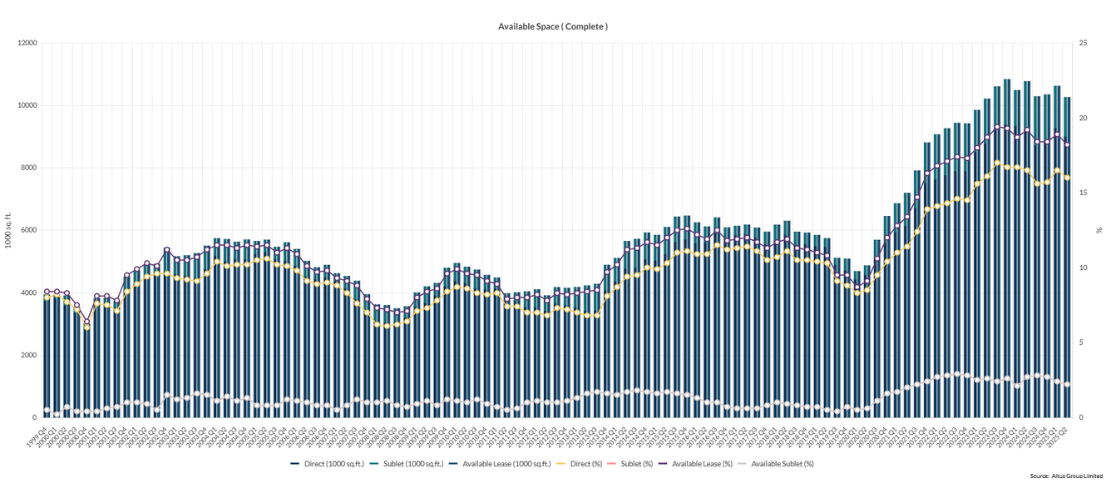
The downtown Montreal office market remains largely a tenant’s market five years after the initial outbreak of COVID-19. It’s hard to believe that vacancy rates were below 10% in mid-March 2020, and that finding quality office space was becoming increasingly difficult—a clear landlord’s market at the time.
The extent of this shift is evident in current vacancy statistics. According to the latest Altus report, available space in the core now stands at 18.2%, including direct space (16.2%) and sublease space (2%).
Having been active in the Montreal office market over several cycles, I have seen many shifts in occupancy levels. Unfortunately for owners, landlord-friendly markets tend to be short-lived before an external event disrupts the balance. This time, recovery is taking longer—and for buildings that fail to meet the needs of companies striving to bring employees back and foster a collaborative environment, it may never come.
However, after the longest period of escalating vacancy rates on record, the market is finally showing signs of stabilizing, which should eventually lead to reduced vacancies.
Employers have now had five years to adapt to the shock of COVID-19, navigating return-to-work protocols. While each industry has its own requirements, hybrid work models have become more firmly established, with mandatory in-office attendance for a set number of days per week or month. This will give tenants a certain level of comfort as they assess their needs.
The conversion of office into residential spaces will also affect office vacancy—notably 1245 Sherbrooke Street Ouest, the former Standard Life Head Office, and the proposed conversion of 625 René-Lévesque Ouest by Groupe Mach. Other projects will follow.
On the other side of the equation, a potential mitigating factor is shadow space—excess office space that hasn’t been placed on the sublease market but will be returned to landlords upon lease expiration. Whether this represents a significant source of available space remains to be seen.
Finally, the impact of tariffs on office space demand is still uncertain. It will not be a linear return to a balanced market!
As history has shown, landlords who adapt to tenants’ evolving needs—with state-of-the-art HVAC systems, renovated common areas, conference centers, daycare facilities, and other amenities—will continue to outperform the market. And having a building on a redeveloped street being redeveloped with a REM station—such as McGill College—certainly helps.
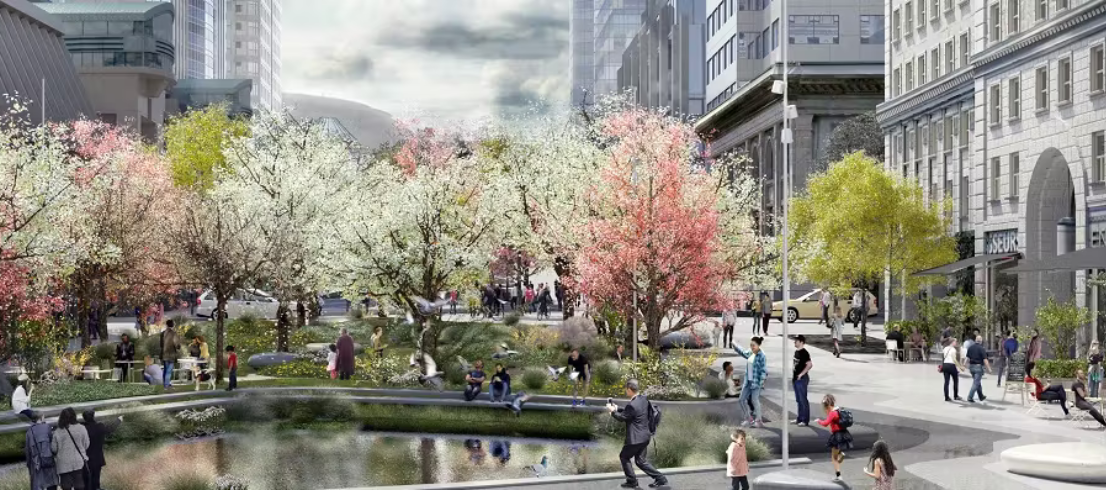
McGill College holds a special attachment for me as my first office was in 1801 McGill College, followed later by offices at 1253 McGill College, 2000 McGill College, 1800 McGill College… and Place Ville Marie, the southern anchor of the street…
Also, an event close to my heart, Pedal for Kids, had its starting point at the McGill Roddick Gates from 1998 to 2010.
Street-level construction is finally complete after five years of no man’s land with the REM soon coming to McGill College. The Ville de Montréal’s project to transform McGill College into a pedestrian-only street—from Sherbrooke to Place Ville Marie—is scheduled to begin in 2025. This initiative promises to create one of the most iconic streets in the country, hopefully helping to revitalize the city’s core. A preliminary rendering can be found on the City of Montréal’s website.
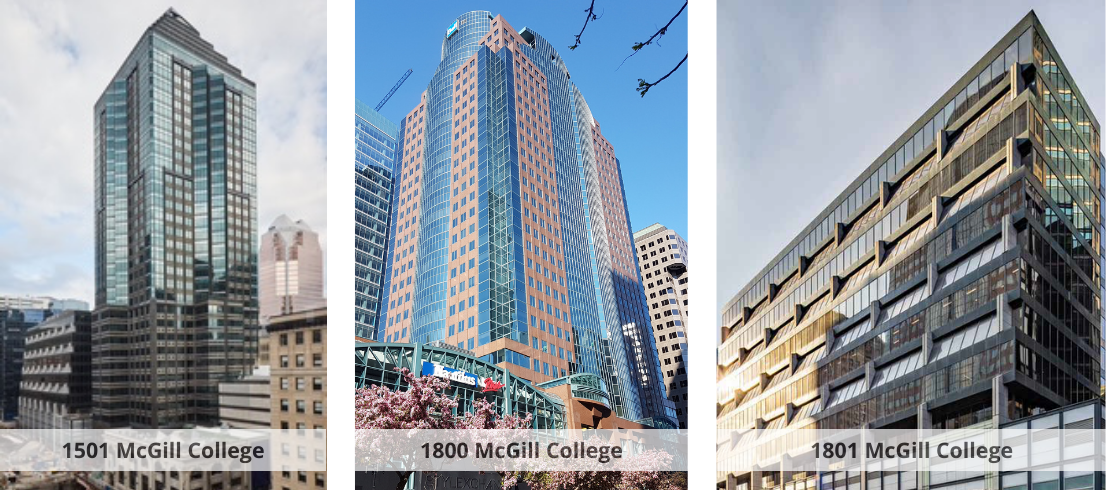
PLN has been active recently on McGill College, with clients such as Golden Equity renewing their lease at 1800 McGill College, a National Wealth Management company renewing at 1501 McGill College, and most recently, Tecsys Inc.—a Montreal-based company—which will be relocating its head office to 1801 McGill College at the end of 2025.
I would never have thought that when I moved into my first office at 1801 McGill College, this avenue would become such a focal point of my career.

The leasing process in post-pandemic times… Virtually all projects begin with tenants asking themselves the same questions: How much space will I need? How will it be used? What is the impact of remote work, and for how long—permanently?
In most cases, the best approach is to start early, even if it means pausing the project midway as tenant’s needs become clearer. This also allows tenants the flexibility to assess the changing market. The high cost of construction, the uncertainty across all aspects of business, and shifting requirements—everything must be considered.
If possible, a short-term renewal may be the best option, or perhaps taking advantage of the tenant’s market. For smaller tenants, existing space can be an interesting option to avoid construction costs. Typically, larger tenants find it difficult to adapt to existing space.
I am always available to have a chat to discuss your options.
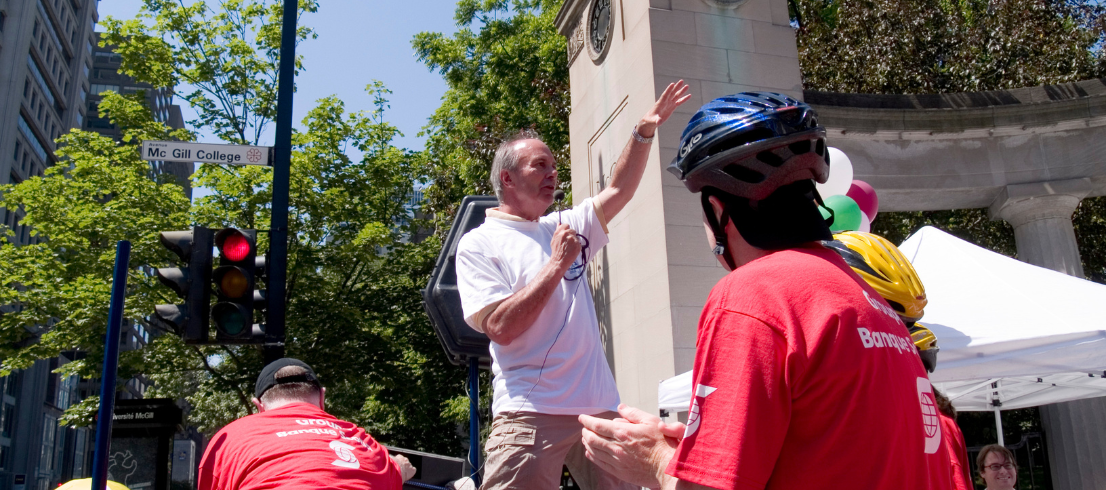
Lastly, spring wouldn’t be complete without Pedal for Kids, one of the Montreal Children’s Hospital Foundation’s most important fundraising events—and also one of the most recognizable in the streets of Montreal. Picture a 30-seat Mighty Bike, powered by enthusiastic participants, making its way through downtown to the sound of lively music!
This cause has been close to my heart for 33 years. I am deeply grateful for your support over the years and look forward to your continued generosity for the 34th edition!
To support and donate: click here
Look forward to seeing on the Street!
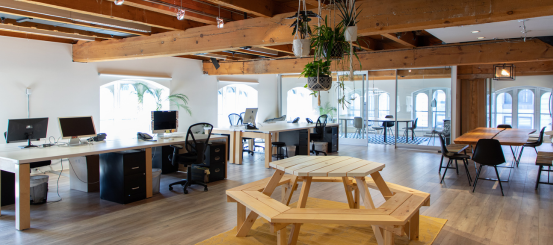
Today, it is not the marketing specialist in commercial real estate who wants to share her experience with you. Rather, it is the company manager who has been managing employees for over 20 years and who wants them to prosper in their work and find meaning in their contribution to the success of the organization.
Among SGM’s employees, we have many that have been with us for over 10 years. We are considered a large growing family, sharing birthday parties, weddings and out of the office barbecues. The pandemic was certainly a test of the company’s strength and especially of everyone’s loyalty. Everyone quickly adapted to a new reality and to being more creative and positive with each other and with our clients. I cannot thank them enough and as a friend and leader to my employees I felt it was my duty to protect their jobs.
SGM is located at 85 St-Paul Street West, in a historical building in the heart of old Montreal. Our offices resemble a large attic with wall-to-wall windows. It’s beautiful and inspiring!
In 2021, I decided to renovate the space and to welcome everyone back to the office. The return has been gradual, we are at 3 days/week. They are happy to meet up again, the virtual will never replace human contact and the spontaneity of discussing a file.
But unfortunately, the pandemic lasted too long to believe in a real return to 5 days/week. The pandemic made it possible that one can work from home. As an employer, we have also become aware of the growing issues with the new generation who prioritize convenience and flexibility. Many are starting their adult lives as parents, they cannot afford homes in the city, so they move several kilometers away, we are not talking about Brossard, but St-Jean sur Richelieu and sometimes even further. This makes it an issue to travel. No doubt the REM will one day be a solution but for now, time spent on transportation as well as the cost of parking in the area have all contributed to the advantages of working from home.
It is true that it is beneficial to allow individuals to choose how they want to work. However, this transformation has not been all positive. We are realizing this after 3 years to the day. It is more than obvious that loneliness and isolation threaten team cohesion. A company that has been known for its bonding culture, team members quickly developed close relationships with their daily colleagues, inviting each other to their children’s birthdays and having barbecues on weekends – just like employees at many other companies.
We are becoming aware of the power of propinquity, discovering the consequences of a diminished sense of belonging.
What is propinquity: it is our natural tendency to develop close interpersonal ties with the individuals closest to us and is one of the main factors of cohesion within a group. Propinquity is at the heart of every team, every intimate relationship, every social bond created. It is the reason why our workspace is so important.
Let’s be positive; behind every problem is an opportunity. By understanding the causes of loneliness, isolation and a weakened sense of belonging, companies and building owners can define appropriate measures to foster a culture and enhance the value of office work.
This leads us to ask the question: How can we as employers and tenants of commercial space foster spaces for exchange especially as we approach the end of our lease and of course maintain our square footage of lease renewal?
When all employees are in the office, we need our space, especially for companies with 4,000 to 8,000 square feet.
Hiring has been a challenge, and the expectations of our new generation on who we are betting on and who will be the future leaders are more demanding in terms of work environment and flexibility. They want to be able to combine their time at work with other related activities, more than close by, under one roof and less expensive than close to home. They want more relaxed working environments, places for yoga, good coffee, and at the end of the day, a fun atmosphere.
This responsibility to create an environment that meets their expectations can only be created by the employer. The owners of office buildings must allow us to offer these extensions to our employees. It is indeed an investment for them that will allow tenants to renew their spaces and allow us to offer additional services that will be additional attractions to retain hires.
Even if we accept the flexibility of telecommuting, all the business leaders I talk to strongly believe that being in the office is beneficial for everyone. Employee morale, upward mobility, these additional services developed in the office towers will help attract them to the downtown area.
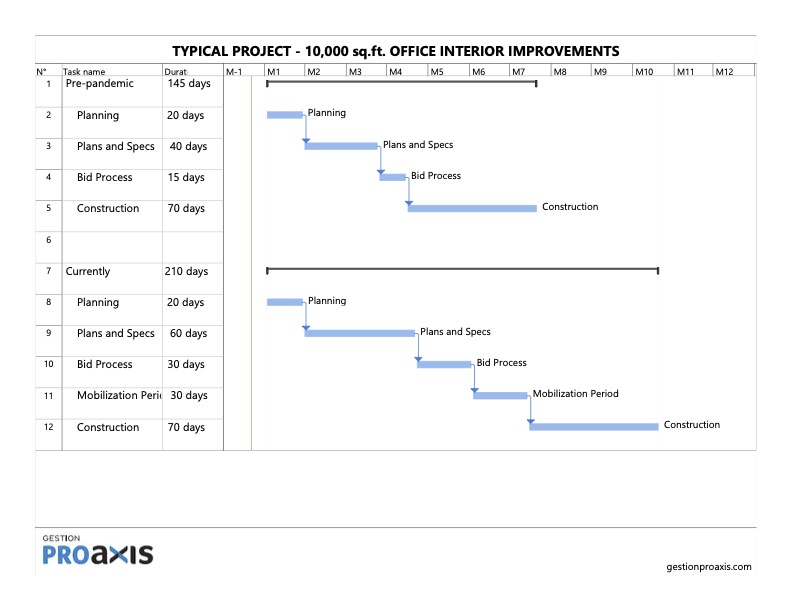
While the COVID-19 pandemic was in full swing, the construction industry underwent a significant transformation, the repercussions of which will be felt for a very long time.
Cost volatility and materials availability have made the work of all project contributors particularly complex and unpredictable. Long delivery times for essential project components create major bottlenecks in general contractors’ schedules. Despite significant planning by all stakeholders, the number of imponderables continues to increase, as do the delivery times for construction projects.
Labor shortages, wage indexation and delays in construction are also daily issues that businesses now must operate with, hoping to prosper. Since the scarcity of labor creates an overload of work for construction companies, they are forced to limit their offer and can currently afford to select the projects on which they wish to work, given the great demand. At least, that was the situation towards the end of the pandemic.
At the same time, while the variation in material costs seems to be stabilizing, interest rates are exploding and creating a dichotomy between previously allocated budgets and current construction costs. This sharp increase in interest rates is currently causing a drop in demand, and ground-breaking ceremonies are scarcer.
We firmly believe that, to manage an unpredictable situation and limit the number of imponderables, it is time to put aside traditional project management methods and make room for innovation. General contractors are currently experiencing strong constraints when bidding on lump sum contracts, since it is practically impossible for them to accurately budget a construction project, while remaining competitive and respecting the required schedule.
We therefore propose a partnership between all the stakeholders involved in the realization in every project. By involving the contractor in the design process, we can add his expertise and hir current market knowledge to that of the professionals, to jointly establish a more realistic schedule that considers the needs of the project as a whole.
Intelligent planning of the execution of the work involves building a schedule around the realities of delivery times for equipment and critical materials. Therefore, we recommend starting projects earlier than traditionally, to adjust to new post-pandemic realities. For example, an interior remodeling project, associated with a new lease or renewal, previously required a period of approximately 18 months between the time the project was initiated, and the tenant moved in. Today, it is necessary to plan at least 24 months to have time to properly design the project and to establish the schedule for the completion of the work.
Finally, a partnership between all will make it possible to obtain a global vision of the project and to better control the costs and deadlines of the work in real time. This collaborative approach allows you to maintain better control over project deliverables and better meet the expectations of all stakeholders.
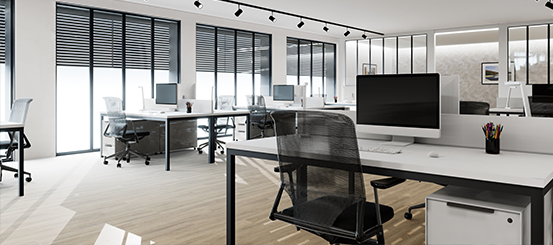
Over and above the construction challenges brought about by the pandemic, more time is required by tenants given the uncertainty surrounding their use of space, the impact of remote work on the amount of space required, the shorter lease terms that reflect tenants’ uncertainty which makes the amortization of leasehold improvements a challenge.
One thing that is constant for tenants having to face a decision regarding their premises is it would be wise to add an additional 6-12 months to the process:
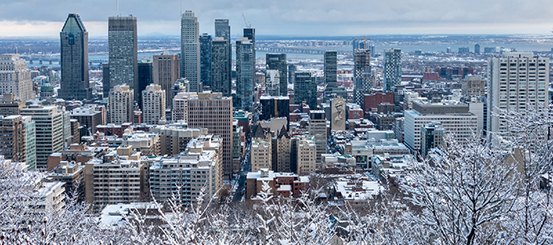
Offices
The medium to long-term impact on vacancy levels and excess space is still to be determined but overall office vacancy has increased only moderately—from 11.7% in the fall of 2019 to 12.3% at the end of the second quarter of 2020. Office leases are long-term commitments and do not react immediately to environmental, political or economic shocks. One immediate indicator, however, is the increase in sublease space from 5.6% of available space in the fall of 2019 to 11.5% in Q3 of 2020.
A majority of subleases only have two to three years left on their terms and the impact on landlords’ vacancy levels will mainly be felt at the lease expiry as most office tenants have continued to pay rent. As tenants get a better understanding of the various hybrid working solutions that they have been forced to consider, we will probably see an increase in sublease space over the next few months. We are becoming familiar with the new terminology imposed by COVID-19: work from home, work from anywhere and hybrid solutions which will manifest themselves in various forms.
Also, all the suburban markets in the Montréal area have experienced a decrease in vacancy which supports a further post-COVID-19 hypothesis that satellite offices will become more prevalent. These offices are typically sales offices, branches of professional offices and other companies not needing to be in the core. There’s a benefit in hiring employees living in the area and also to service and be closer to specific geographic areas.
Historically, we have to go back to 2014 to find office vacancy rates similar to what we are seeing now and there is very little in the way of major office construction in progress in Montréal that will have a major impact on space availability in the short term.
As demand for office space has decreased in the past eight months and sublease space is added to the market, there will be compression on net effective rates through increased inducements as landlords typically want to maintain face rates. Rental rates and inducements will be dictated as usual by landlords’ current and projected vacancy but the differentiator in the COVID-19 era is the unknown impact on space requirements in the future and resultant vacancy. In any event, tenants will have many options to choose from!
Industrial
In contrast to the office market, the industrial market is at historical lows in most of the Montréal area largely due to the distribution channels required in response to the increase in online shopping.
In addition, many large retailers such as Canadian Tire, Amazon and Costco have established major distribution centres as demonstrated in the attached map.
Rental rates have increased in a remarkable fashion in the past three years from $5.50/sq. ft. net to $7.25/sq. ft. net. Rates can vary widely between older buildings with lower height, newer buildings with a height of 24 feet and more, and new constructions.
This has been a trend for several years and as with all things COVID-related, it will be interesting to monitor the evolution of the demand in the industrial market.
Credit : The Data has been provided by Groupe Altus.
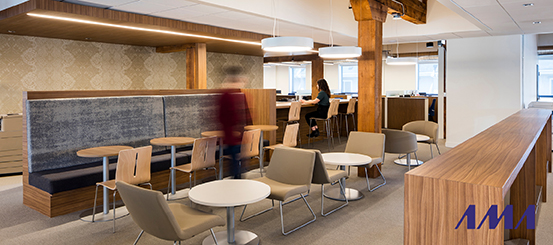
As we are now looking more to return-to-work, I asked designers at Atelier Monarque Architecture how they see the impact of COVID-19 on the future of design in the work environment. You will find their incisive ideas along with sketches that open our thoughts to the future workplace.
I have been an advocate of the “clean desk” practice which requires that office desks be cleared of paper at the end of each workday since seeing the damage to documents caused by the historic fire at Place Alexis Nihon in 1986. The damage to the documents was from the water not the fire. The clean desk approach has hidden benefits!
Solutions will be different for each company and decisions will be made as a function of the comfort level of both employees and employers in returning to the office. It will be interesting to see what the lasting impact will be on our work habits.
The ever-changing paradigm: COVID and the future of our living spaces
In a recent conference for the Forum of Mayors of the United Nations on the question of the post-COVID cities, British architect Norman Foster presented his views on the question: he does not believe the cities of tomorrow will be fundamentally changed by the crisis. It is in fact clear that COVID has been a catalyst for changes that were already underway: an increased practice of remote working, a widespread desire to reappropriate the public space and make it greener, the return of community-thinking, etc.
At Atelier Monarque Architecture, we decided to approach the crisis as an opportunity to demonstrate that these changes to our lifestyles that were already underway were not only necessary, but beneficial to our global wellbeing. The crisis has, indeed, confirmed the necessity for an increased flexibility, adaptivity and resilience for our spaces.
This flexibility would happen primarily through a rethinking of the functions of our environments and an increased porosity between them. But what do we mean by porosity? In the same way that work and school invited themselves in our homes, it would make sense to rethink the various activities that we practice indoors and outdoors both in public and corporate spaces, so that these can welcome a wider breadth of activities such as education, continuous learning, work, business transactions, hobbies and social life.
This porosity might seem counter-intuitive in the context of a pandemic, but it would expand the global space available rather than condense human presence in the various limited spaces currently allotted for these various activities. We could for instance adopt on a more global scale the practice of greendesking (utilizing the exterior urban spaces as extensions of the office: literally green offices with wifi, work surfaces and charging stations right in the middle of parks, for instance). The physical office, for its part, would become an “event” space, dedicated to collaboration and idea exchanges. We would maintain the practice of working remotely for any task requiring solitude and focus, and this remote work could be done from home as well as from your local coffee shop or favourite bookshop.
As designers and architects, the question we’ve been asked repeatedly in the past 8 months is whether or not we should consider changing the occupied areas for corporate and commercial activities. For most, the question is whether people will return to the physical office and if so, how can we help people respect the 2-meter rule without expanding the spaces available.
Even though there is no one-size-fits-all response to this since everyone’s situation is different, we strongly believe that, rather than considering changing the usable square footage, we should instead shift the individual square footage or me space to redistribute it globally to collaborative and collective spaces or we space.
One of our clients whom we’ve been working with for close to five years was an early adopter of the unassigned and clean desk policies. The result? The company was able to weather the crisis with little to no changes to the offices’ configuration because the division between me and we space was already clear and intuitive for the employees.
Concretely, at the scale of the office space, democratization of spaces and the adoption of various typologies or furniture and uses enables spaces to become more resilient to major changes. Let’s take the example of a traditional conference room where we can find a screen, a central table and chairs clustered around that table: this structure is more hierarchical and certainly functions in a lot of contexts and types of companies. With COVID and while we wait for the vaccine, however, we must consider the needs of social distancing, and this was enforced on the short term by the condemning of one out of two to three seats in conference rooms, therefore diminishing both their capacity and their collaborative aspect.
Our proposal for a more long-term solution is to explode the traditional structure of conference rooms to turn them into flexible meeting spaces with multiple smaller clusters, various surfaces for collaborative or focus work, different scales of seating (lounge, conference, bar stool) as well as movable walls that can be opened up or closed depending on how large a group is meeting. This would enable safe and more organic meetings between people, but also permit focus work or even training sessions. Overall, people would simply feel freer and at ease to use the space the way they see fit by choosing seating, lighting and acoustic conditions that best suit their personal preferences and needs.
Finally, another important aspect to factor in is the public’s confidence in public spaces which has been deeply strained by the health crisis. In order to bring back people in these spaces, we will need to make them not only inclusive, reassuring and safe, but enticing, stimulating, intuitive and complementary to our new ways of living. Their functions will therefore focus more on activities and needs we cannot fulfill from our homes.
We believe that a good path forward would be to explore the possibility of designing buildings of the future as micro-neighbourhoods where one could find all sorts of services and amenities: daycare, cleaner, grocery store, cafeteria, local coffee shop, concierge services, commercial space, all of this, adjacent to corporate and residential spaces.
Crédit: Atelier Monarque Architecture
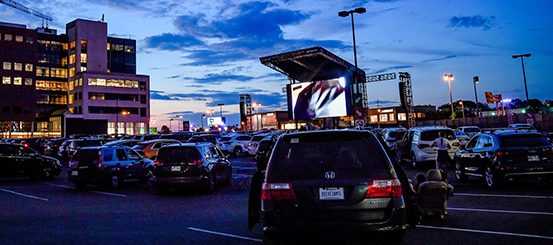
On the feel-good front, Pedal for Kids, an event that benefits the Montreal Children’s Hospital was scheduled to take place in early June 2020 for the 29th consecutive year. Like many events this year, Pedal for Kids had to modify its plans.
As it became clear that 900 riders cycling through the downtown core of Montréal for a week in June would be impossible, it was decided to replace the ride with a drive-in movie at the Royalmount theatre. Unfortunately, restrictive government measures were put in place on the Friday before the event and to ensure the complete health and safety of all, we decided to cancel that event as well. Pedal for Kids was again modified, this time as a Zoom event. Despite the many setbacks, the companies that participated managed to raise an outstanding $236,000. We are hopeful and optimistic that we will be back on the streets of Montréal in 2021.
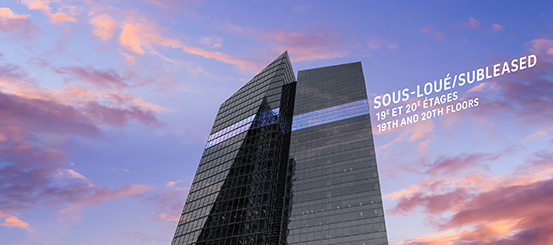
Over the past year, I’ve had the pleasure of representing Rio Tinto in the sublease of the 19th and 20th floors of the Tour Deloitte. After reorganizing their Montréal office to be more efficiently configured, Rio Tinto was left with two available floors in one of the most prestigious office buildings in the downtown core.
This collaborative effort with the Rio Tinto team led to the successful sublease of the full two floors to Groupe CH, who will occupy 44,000 sq. ft.
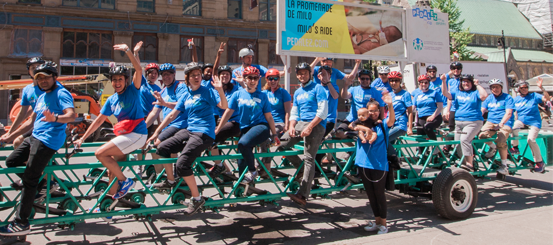
For another year, thanks to amazing teamwork and lots of energy, we managed to raise over $470,000 during the 28th edition of the “Pedal for Kids” event, bringing the total collected since the creation of this fundraising activity in support of the Montreal Children’s Hospital Foundation to $13.1 million! A huge thank-you to all for your generosity. See you next year!
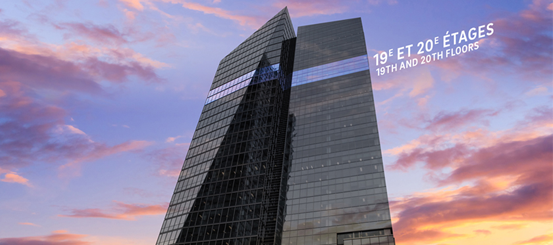
PLN is pleased to represent Rio Tinto for the sublease of a new-generation, leading-edge office space that is ideal for connected, innovative businesses. A Space between 8,000 sq. ft. and 43,934 sq. ft. is currently available on the 19th and 20th floors of the Deloitte Tower, one of the most prestigious buildings in the city’s downtown core, in the thriving Quartier des gares district. You will have access to a vibrant cultural scene thanks to the Bell Centre, as well as to over 150 restaurants located within a 10-minute walk, an array of nearby services and numerous other conveniences. Choose a stimulating work environment and services that meet the highest industry standards. We would be pleased to provide more details and a tour of the space.
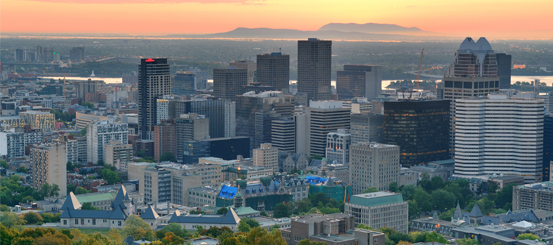
While vacancy rates are still in double digits as per the attached snapshot of the market by Altus InSite, Landlords are feeling more confident. New construction both in the core and sub-markets continues, vacancy rates in the core have only seen a modest increase, from 12.3 per cent in March 2018 to 12.7 per cent in July. We have not experienced such positive trends in Montréal in a long time and will continue to follow major tendencies in future newsletters.
Source: Altus Group
Destination, geek: Mile-End
Mile-End continues to attract technology companies, video gaming companies and back offices. MILA recently leased 63,000 sq. ft. in 6666 St. Urbain, and Canderel ventured into the area with a 105,000 sq. ft. redevelopment at 6830 Waverley, 50 per cent of which is leased and the balance of which is under serious negotiation. Also, Ubisoft continues to expand their premises at 5445 De Gaspé. To get an idea of the growing importance of this geographic sector, note that combined, 5800 St. Denis, 5445 De Gaspé and 5455 De Gaspé constitute 1,700,000 sq. ft.—a space larger than 1 place Ville Marie.
New in Westmount
With Alexis Nihon and Westmount Square also in the 95 per cent occupancy range, the timing seems right for Kevric’s redevelopment of a new, 150,000 sq. ft. office project at 1100 Atwater. The area will also be transformed by the new Square Children’s by Devimco, a residential mixed-use project on the former Montreal Children’s Hospital site.
Co-working
Co-working continues to grow in Montréal as it has in most major cities. WeWork is well established both in Place Ville Marie and in the office podium of L’Avenue. The other co-working giant, Regus, seems to be in every building in Montréal, including 1250 René-Lévesque W., 1000 De La Gauchetière W., 2000 McGill College, 1200 McGill College and now in the Mile-End with the opening this summer of a 30,000 sq. ft. facility under their Spaces banner at 5445 De Gaspé.
New projects
Allied REIT is currently redeveloping a 310,000 sq. ft. building at 425 Viger W. for occupancy in late 2019. Immediately south of Place Victoria the new Banque National head office is being built by the ubiquitous Broccolini group. On the east side of the property at 700 St. Jacques W., Broccolini will also build a 56-storey mixed-use project which will include 330,000 sq. ft. of office space on the lower floors and residential condos on the superior floors, and share an extensive common area with the bank.
Manuvie, a major real estate player in Montréal, relocated its head office to a new development that is co-owns with Ivanhoé Cambridge at 900 De Maisonneuve W. in 2018, leaving its former location at 1245 Sherbrooke W. This iconic 200,000 sq. ft. building on Sherbrooke is now in pre-development stages and considering tenants in the 100,000 sq. ft. range before proceeding.
For more information :
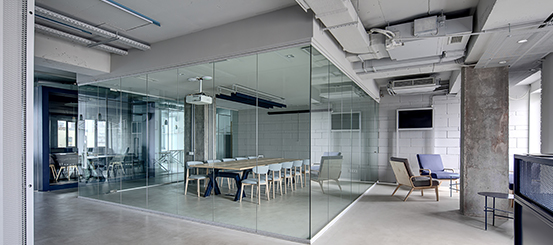
Design and Decor
Here is a great site if you like to browse interesting offices: Office Snapshots
Construction costs
As space gets a little tighter, built-out space becomes more and more scarce which is a growing concern given rising construction costs. Until fairly recently the average construction cost for mid-range tenant improvements was $50–$70 and now can reach between $70 to $100 per sq. ft. and more. Landlords with major vacancy are increasing the allowance for credit-worthy tenants but there are still heavy construction costs to be borne by the tenant. This necessitates long-term leases to amortize the costs, in a world where landlords are trying to accommodate tenants’ needs for more flexibility for rapidly changing requirements.
Timeline
When landlords take an aggressive approach to filling their space (which has usually been the case in Montréal) tenants were given rights of first refusal (RFR) without much of a struggle. Now after a long process of setting objectives, touring a short list, planning and cost estimating the improvements, negotiating and executing the offer to lease, the tenant usually has to wait until one, two or even three rights of first refusal are waived which can take up to a month or more. A nightmare scenario, as seldom is plan B as interesting as plan A. “Start early in your real estate project” is a mantra I have preached for years. More so now!
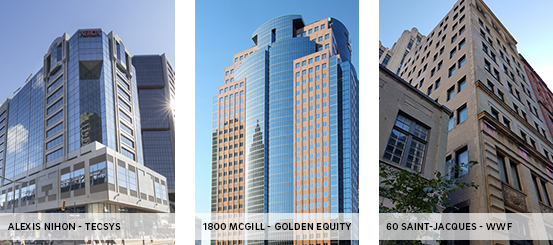
It has always been my objective to be a partner to my clients in their projects and ensure that their best interests are protected. This results in long-term relationships, as witnessed by a few recent transactions:
Tecsys
Tecsys, a leading supply chain management company, expanded into 12,000 sq. ft. of state-of-the-art space designed to meet their growing needs earlier this year and now occupy over 42,000 sq. ft. in Alexis Nihon. It has been a pleasure to be part of their success, as they grew from 150 employees in 2008 to over 350 currently.
Golden Equity
When I first met Golden Equity 20 years ago, they were three partners setting out to acquire apartment buildings. The same three partners now own over 2,000 apartments (doors) in Québec and Ontario. They will be relocating their head office to 1800 McGill College in October 2018. Construction costs were kept to a minimum as they were able to retain 70 per cent of the high-quality improvements in the space.
WWF-Canada
And a significant smaller transaction: the World Wildlife Fund (WWF-Canada) wanted to relocate into a building that could accommodate their growing team, but keep within tight budgetary constraints. A meticulously redeveloped building in Old Montréal was identified which met WWF-Canada’s objectives.

It was another great year for Pedal for Kids which has been my passion for over 20 years. Every year in early June, more than 800 people can be seen pedalling on a 30-seat bike to raise funds for the Montreal Children’s Hospital. This event brings together the Montréal business community to help treat and find new cures for our children. We raised $400,000 in 2018, bringing the total raised over 27 years to $12,700,000. See you next year!